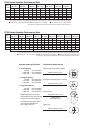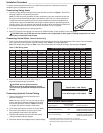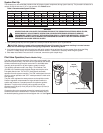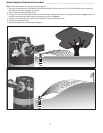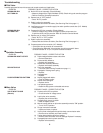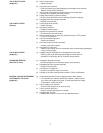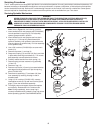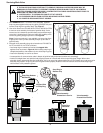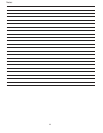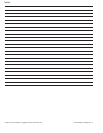
Servicing Procedures ____________________________________________________
The DT series sprinklers are designed to provide the user trouble-free operation for many years without scheduled maintenance. If it
becomes necessary to disassemble the sprinkler to correct a malfunction or replace a component, all internal parts of the sprinkler
can be accessed from the top. Refer to the Troubleshooting Procedure in this manual in the event of a malfunction. Some special
tools are required for disassembly and/or maintenance of the sprinkler and are available from your Toro dealer.
Servicing Sprinkler Mechanism
Note: Refer to Figure 6 for the following procedure:
1. Insert hooked end of multi-purpose tool (P/N 995-83)
into slot provided in top of cap (3). Pull assembly
upward, grasp and hold in position.
2. Insert hooked end of multi-purpose tool into slot in
snap ring (11). Pull snap ring inward toward the
sprinkler assembly, then upward to remove from the
snap ring groove in sprinkler body. Pull riser assembly
out of sprinkler body.
3. Use a 5/8" nut driver (P/N 995-99) to unscrew main
nozzle (10).
4. Remove cap screw (1) and cap (3).
5. Grasp return spring (14) and riser (16) firmly and hold
in place while removing nozzle base (4). Turn nozzle
base assembly counterclockwise to remove.
6. Carefully release tension from return spring (14).
7. Remove spring and seal retainer/o-ring assembly
(12 and 13).
8. Remove o-ring (13).
9. Remove rock screen (19) turning it counterclockwise
with edge of multi-purpose tool or tips of snap ring
pliers (P/N 995-100).
10. Remove drive assembly (17) and stator (18) from
riser assembly by carefully pressing on end of
threaded shaft.
11. Using a 5/16" nut driver (P/N 995-105), unscrew
intermediate nozzle (5 & 6) and inner nozzle (5) and
plugs (7) from the nozzle base assembly.
12. Thoroughly clean and inspect all parts and replace
as necessary. Reassemble in the reverse order.
Note: During reassembly, ensure snap ring is
correctly installed and fully seated in snap ring groove
before operating sprinkler. See WARNING above..
Figure 6
WARNING
NEVER STAND OR LEAN OVER THE SPRINKLER WHILE THE IRRIGATION SYSTEM IS BEING FILLED,
DURING MANUAL OR AUTOMATIC OPERATION OR WHEN PERFORMING SPRINKLER SERVICE
PROCEDURES. DIRECT CONTACT WITH IRRIGATION SPRAY, A FAILED OR IMPROPERLY INSTALLED
SPRINKLER CONNECTION OR SPRINKLER COMPONENTS FORCIBLY EJECTED UPWARD UNDER
PRESSURE CAN CAUSE SERIOUS INJURY.
8




